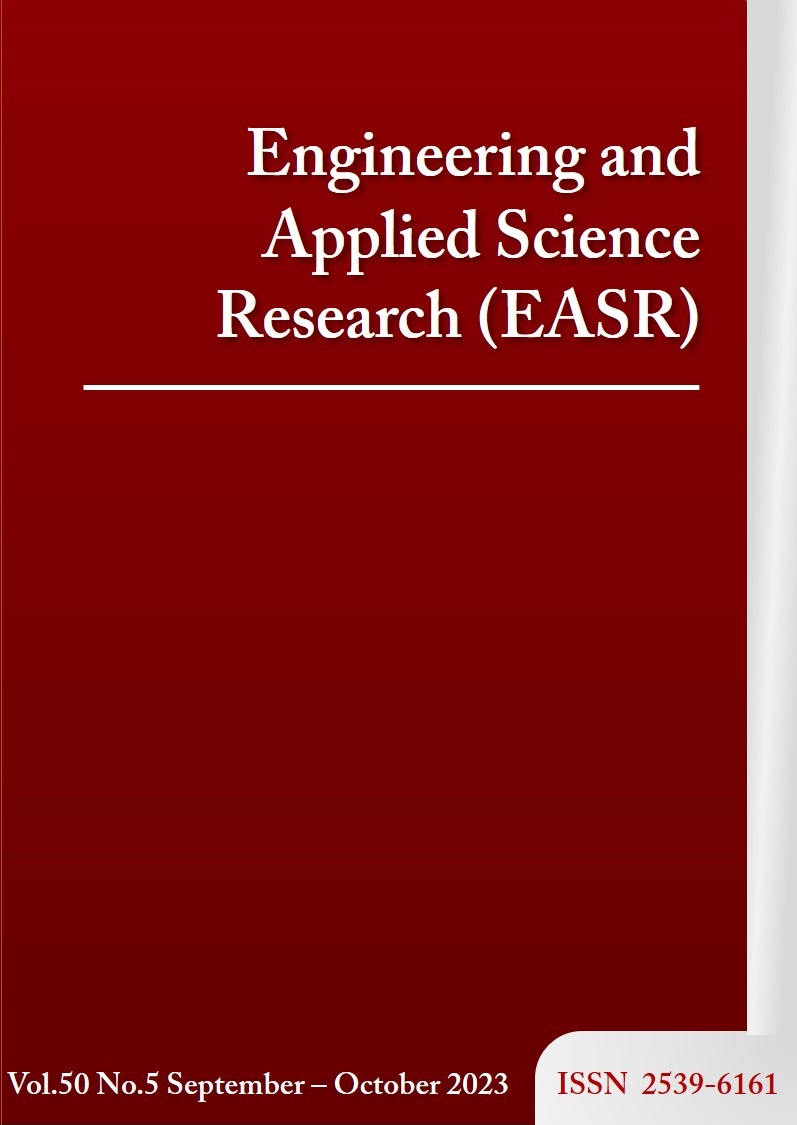Analysis and forecasting flood risk mapping of the Medjerda River at Boussalem town, in Tunisia
Main Article Content
Abstract
This work aims to make a comprehensive analysis of the floods on the crossing part of Boussalem city (North Tunisia) in the framework of possible future scenarios for different return periods. A 2D hydrodynamic model based on TELEMAC-2D for flood simulation is developed taking into account the dynamics of the flows and the floodplains, after processing and analysing the available topographic and hydrological data. A lidar survey and an Ortophoto covering the project area (wadi beds and floodplain) were processed to define the different land use components. They are then converted to produce a bathymetric mesh. Five flood hydrographs corresponding to return periods of 5, 10, 20, 50 and 100 years were constructed based on an analysis of historical floods recorded in Boussalem. After calibration and validation of the model, the main conclusions of the study revealed five representative maps made from the results of the water level heights generated by Telemac2d for the events with different return periods. The final synthetic map presents the development of the spatial distribution of the flood risk over the urban area, it shows that the flooded areas in the city represent respectively 30%, 50% and 86% for the 20, 50 and 100 years return period events, which shows a strong risk for these events.
Article Details

This work is licensed under a Creative Commons Attribution-NonCommercial-NoDerivatives 4.0 International License.
This work is licensed under a Creative Commons Attribution-NonCommercial-NoDerivatives 4.0 International License.
References
Gharbi M, Soualmia A, Dartus D, Masbernat L. Floods effects on rivers morphological changes application to the Medjerda River in Tunisia. J Hydrol Hydromech. 2016;64:56-66.
Romdhane H, Soualmia A, Talbi S. Simulations of possible floods linked to the wadi banks widening in the Somaa city at Cap Bon-Tunisia. J Mater Environ Sci. 2020;11(10):1658-66.
Halwatura D, Najim MMM. Application of the HEC-HMS model for runoff simulation in a tropical catchment. Environ Model Softw. 2013;46:155-62.
Liu Z, Merwade V, Jafarzadegan K. Investigating the role of model structure and surface roughness in generating flood inundation extents using one- and two-dimensional hydraulic models. J Flood Risk Manag. 2019;12(1):1-19.
Horritta MS, Batels PD. Evaluation of 1D and 2D numerical models for predicting river flood inundation. J Hydrol. 2002;268(1-4):87-99.
Villaret V, Hervouet JM. Cross-comparison of different approaches for sediment transport by bed load and suspension. Ninth National Days Civil Engineering - Coastal Engineering; 2006 Sep 12-14; Brest, France. France: National Laboratory of Hydraulics and Environment; 2006. p. 463-70.
Mattic O. Telemac2d Reference Manual. Version v8p0. France: Electricite de France; 2020.
Pavlíček M, Bruland O. Numerical modelling of flash flood event in steep river using Telemac 2D and Sisyphe. XXVI Telemac & Mascaret User Conference; 2019 Oct 16-17; Toulouse, France. France: Hydraulic Engineering Repository; 2019. p. 1-7.
Periáñez R. Chemical and oil spill rapid response modelling in the Strait of Gibraltar- Alborán Sea. Ecol Modell. 2007;207(2-4):210-22.
Forster A, Costi J, Marques WC, Wormsbecher AG, Bendô ARR. Application of the TELEMAC- 2D model in the fluvial hydrodynamics simulation and reproduction of flood patterns. Defect Diffus Forum. 2019;396:187-96.
Rodier JA, Colombani J, Claude J, Kallel R. The Medjerda watershed. Monograph. Hydrology. Tunisia: ORSTOM; 1981.
Sommer. Digital Atlas of Jandouba Governorate. Tunisia: Ministry of equipment and housing, Directorate general of regional planning; 2012.
Paquier A, Mignot E, Bazin, PH. From hydraulic modelling to urban flood risk. Procedia Eng. 2015;115:37-44.
Villaret V, Hervouet JM, Kopmann R, Merkel U, Davies AG. Morphodynamic modeling using the Telemac finite-element system. Comput Geosci. 2013;53:105-13.
Li Z, Liu J, Mei C, Shao W, Wang H, Yan D. Comparative analysis of building representations in TELEMAC-2D for flood inundation in idealized urban districts. Water. 2019;11:1840.
Japan International Cooperation Agency (JICA). Report of the study on integrated basin management focused on the regulation of floods in the Medjerda Basin. Tunisia: Ministry of agriculture, Water Resources and Fisheries, Directorate general of Dams and Major Hydraulic Works; 2018.
SCET-Tunisia, Artelia Echirolles. Water storage and flood protection program, study of measures relating to flood protection in the Medjerda watershed. Tunisia: Ministry of Agriculture, Water Resources and Fisheries, Directorate general of Dams and Major Hydraulic Works; 2020.
Romdhane H, Soualmia A, Talbi S, Gharbi M. Curage de la Medjerda. The International Conference and Demonstration on Advanced Geospatial Science and Technology; 2016 Oct 16-18; Tunis, Tunisia. Tunisia: Teangeo; 2016.
Hammami S, Romdhane H, Soualmia A, Kourta A. 1D/2D coupling model to assess the impact of dredging works on the Medjerda River floods, Tunisia. J Mater Environ Sci. 2022;13(7):825-39.
Coldren C, Asadi A, Cleveland T, Rainwater K. Coupling EDYS and TELEMAC-2D for ecohydrological and Hydrodynamic simulation of San Antonio Bay. Lubbock: Texas Tech University; 2020.
Prodanovic P. QGIS as a pre- and post-processor for TELEMAC: mesh generation and output visualization. XXII Telemac & Mascaret User Conference; 2015 Oct 15-16; Warrington, UK. UK: Hydraulic Engineering Repository; 2015. p. 83-90.
CEREMA. Repository national of vulnerability to floods, ministry of environment, energy and sea. France: European flood risk forecasting center; 2018.
Morri M, Soualmia A. Modeling the impact of riparian vegetation on flow structure and bed sediment distribution in rivers. Arch Hydroengineering Environ Mech. 2019;66(3-4):59-75.



